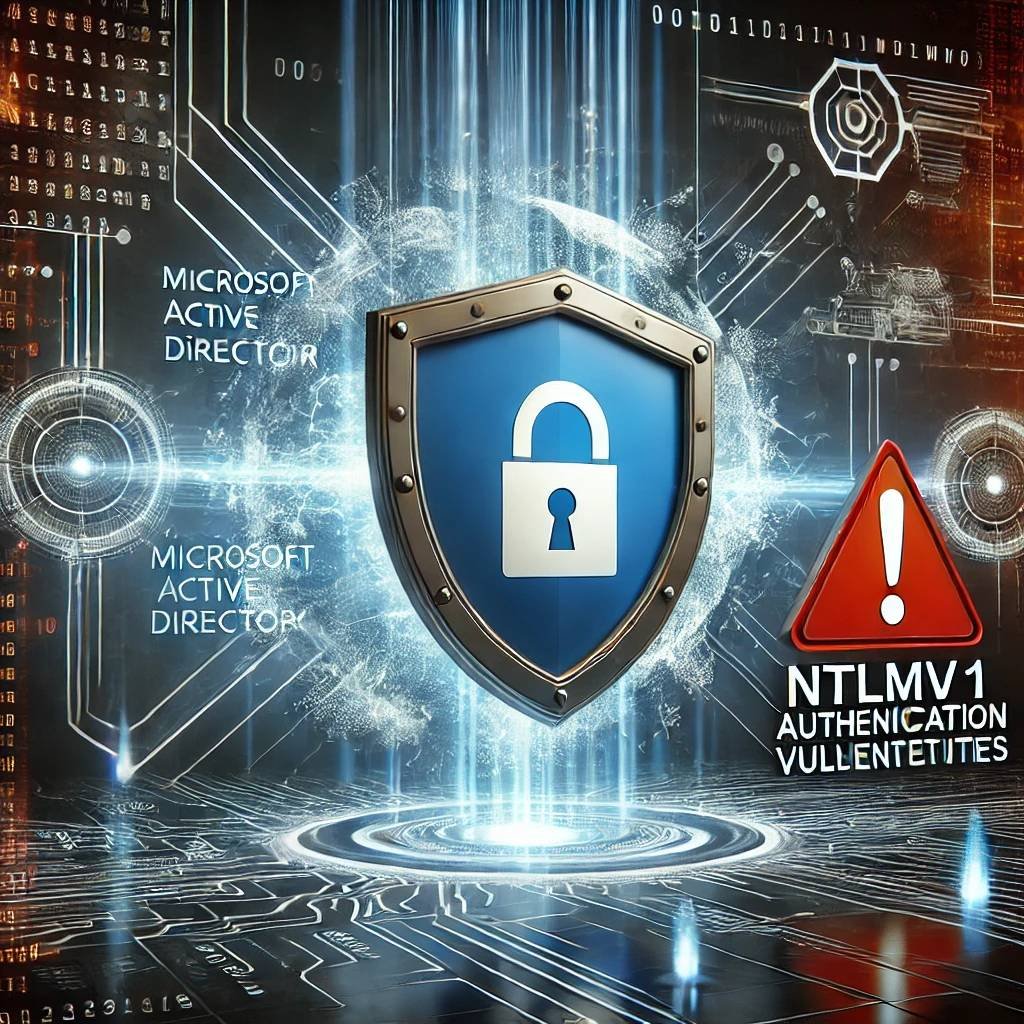New Vulnerability Discovered: NTLMv1 Exploit Bypasses Active Directory Restrictions
Cybersecurity researchers have uncovered a critical flaw in Microsoft’s Active Directory Group Policy, allowing attackers to bypass restrictions meant to disable the outdated NT LAN Manager version 1 (NTLMv1) authentication protocol. Despite Microsoft’s efforts to phase out NTLMv1, a simple misconfiguration can render these security measures ineffective.
What is NTLMv1 and Why Is It a Risk?
NTLM is a legacy authentication protocol widely used in Windows environments to authenticate users across networks. Although Microsoft deprecated NTLMv1 in mid-2024, it still lingers in many systems for backward compatibility.
Security Risks of NTLMv1:
- Weak Encryption: NTLMv1 uses outdated cryptographic algorithms, making it vulnerable to brute-force and dictionary attacks.
- Relay Attacks: Attackers can relay authentication requests to other systems, performing malicious actions on behalf of the victim.
- Credential Theft: Exploiting NTLMv1 can allow attackers to steal sensitive credentials and escalate privileges.
Microsoft introduced Group Policy settings to disable NTLMv1, aiming to mitigate these risks. However, this newly discovered bypass weakens that defense.
How Attackers Bypass NTLMv1 Restrictions
Researchers at Silverfort identified that certain on-premise applications can override Group Policy settings due to a flaw in the Netlogon Remote Protocol (MS-NRPC).
The Exploit Explained:
- The LMCompatibilityLevel registry key is designed to block NTLMv1 by forcing systems to reject NTLMv1 authentication requests.
- However, a misconfiguration in the NETLOGON_LOGON_IDENTITY_INFO structure—specifically the ParameterControl field—can be exploited to allow NTLMv1 authentication.
- This flaw means that applications misconfigured with this setting can still process NTLMv1 requests, effectively bypassing Group Policy.
Real-World Impact:
Organizations that believe they have fully disabled NTLMv1 via Group Policy may still be vulnerable due to misconfigured applications. This leaves them exposed to the very attacks these settings were meant to prevent.
Why This Vulnerability Matters
1. False Sense of Security
Organizations may assume they are protected after setting Group Policies, but misconfigurations can silently leave systems vulnerable.
2. Increased Attack Surface
Attackers can exploit this bypass to carry out relay attacks and credential theft, targeting sensitive systems and data.
3. Legacy Systems Risk
Companies with outdated applications relying on NTLMv1 are particularly exposed, making legacy system management even more critical.
Mitigation Strategies
To defend against this newly discovered vulnerability, organizations must adopt a proactive approach to mitigate NTLMv1 risks.
1. Enable NTLM Authentication Auditing
- Turn on auditing to track and identify systems still using NTLMv1.
- Use Event Viewer to monitor NTLM logins and detect suspicious activity.
2. Identify and Update Vulnerable Applications
- Perform a full audit of on-premise applications to detect misconfigurations.
- Update or reconfigure apps that rely on NTLMv1 for authentication.
3. Harden Active Directory Settings
- Double-check Group Policy settings and ensure that LMCompatibilityLevel is set correctly.
- Implement stronger authentication methods like Kerberos.
4. Implement Network Segmentation
- Isolate critical systems from vulnerable ones to limit the spread of potential attacks.
5. Regular Patch Management
- Keep all systems and applications updated with the latest security patches.
- Apply Microsoft’s latest updates, especially in the Windows 11 24H2 and Windows Server 2025 releases, which have removed NTLMv1.
The Bigger Picture: Strengthening Cybersecurity Culture
This vulnerability underscores the need for organizations to move beyond compliance checkboxes and build a culture of cybersecurity resilience. Relying solely on default configurations and legacy protocols is no longer sustainable in the face of evolving cyber threats.
Cybersecurity teams must continuously audit, test, and improve their defense strategies, ensuring that security measures like Group Policies are both correctly configured and effective in practice.
FAQs
1. What is NTLMv1, and why is it dangerous?
NTLMv1 is an outdated authentication protocol with weak encryption, making it vulnerable to attacks like credential theft and relay attacks.
2. How can NTLMv1 bypass Active Directory Group Policy?
A misconfiguration in the Netlogon Remote Protocol (MS-NRPC) allows applications to override Group Policy settings, enabling NTLMv1 authentication.
3. How can I check if my organization is using NTLMv1?
Enable NTLM auditing in Active Directory and monitor logs for NTLMv1 authentication attempts.
4. What authentication methods should replace NTLMv1?
Organizations should transition to secure protocols like Kerberos or Azure Active Directory-based authentication.
5. Can Microsoft fix this issue?
Microsoft has deprecated NTLMv1 in newer systems but organizations must ensure proper configurations. Future patches may address these misconfiguration loopholes.
6. What immediate steps should organizations take?
Audit applications, enable logging for NTLM, and enforce stronger authentication policies to mitigate this risk.
Discover more at InnoVirtuoso.com
I would love some feedback on my writing so if you have any, please don’t hesitate to leave a comment around here or in any platforms that is convenient for you.
For more on tech and other topics, explore InnoVirtuoso.com anytime. Subscribe to my newsletter and join our growing community—we’ll create something magical together. I promise, it’ll never be boring! 🙂
Stay updated with the latest news—subscribe to our newsletter today!
Thank you all—wishing you an amazing day ahead!







